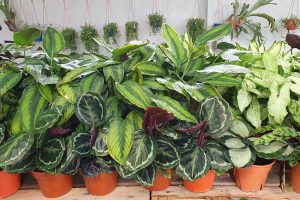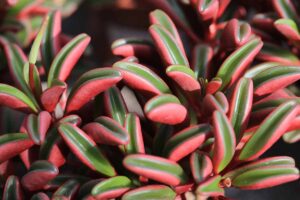African violets, Streptocarpus subg. Streptocarpella sect. Saintpaulia, are tender herbaceous perennials native to eastern Africa suited to outdoor cultivation in USDA Hardiness Zones 11 and 12 and grown as houseplants elsewhere.
They have thick, velvety, green or variegated foliage topped by frilly, single or double blossoms in blue, orange, pink, purple, red, white, or bi- and multicolor combinations. Rosette-style varieties are compact with a single crown.
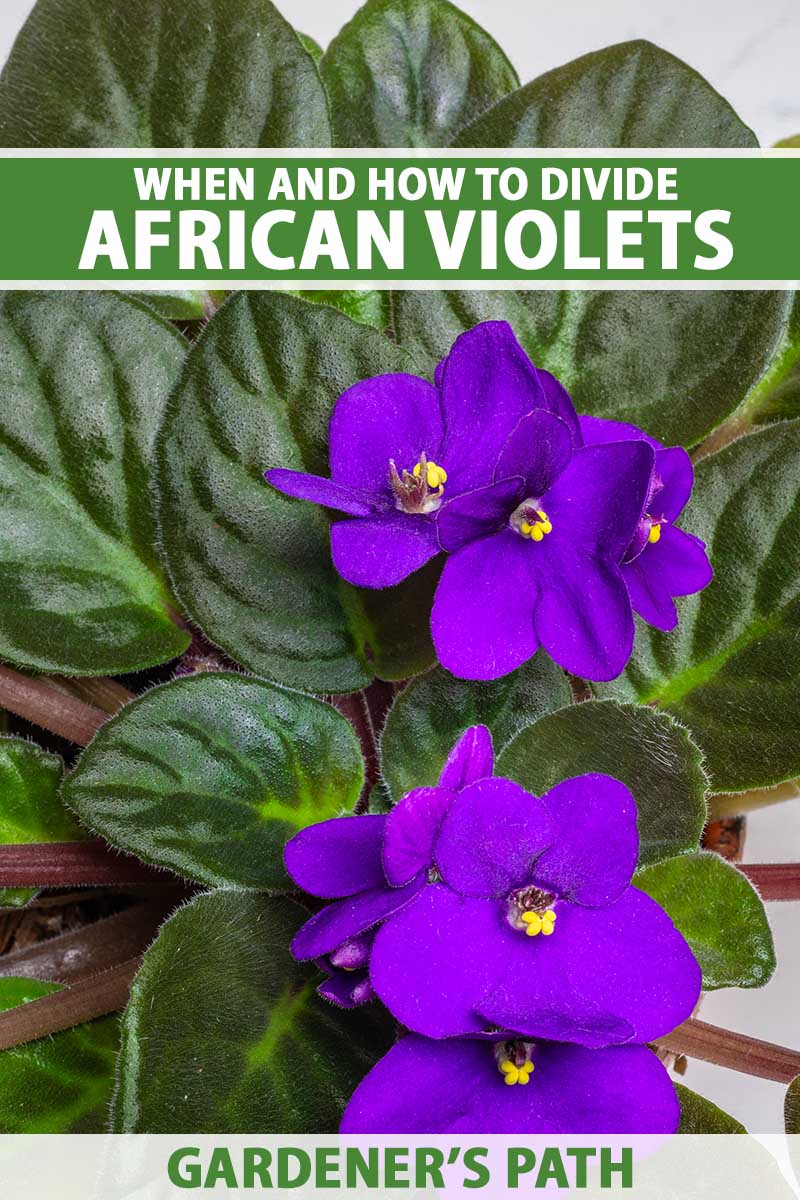
We link to vendors to help you find relevant products. If you buy from one of our links, we may earn a commission.
The rosette types are available in different sizes. There are miniature varieties of less than eight inches wide, standard types that measure eight to 16 inches wide, and large plants that are more than 16 wide at maturity.
Trailing varieties have multiple crowns and a loose, cascading growth habit.
Our African violet growing guide has all you need to know to grow and care for your own.
This article discusses how to divide African violets for health, size management, visual appeal, and to propagate new plants.
What You’ll Learn
Let’s get started!
Why Divide African Violets?
When we divide a plant, we either split an existing plant into one or more sections, known as “divisions” or we sever offsets – offshoots from the parent plant.
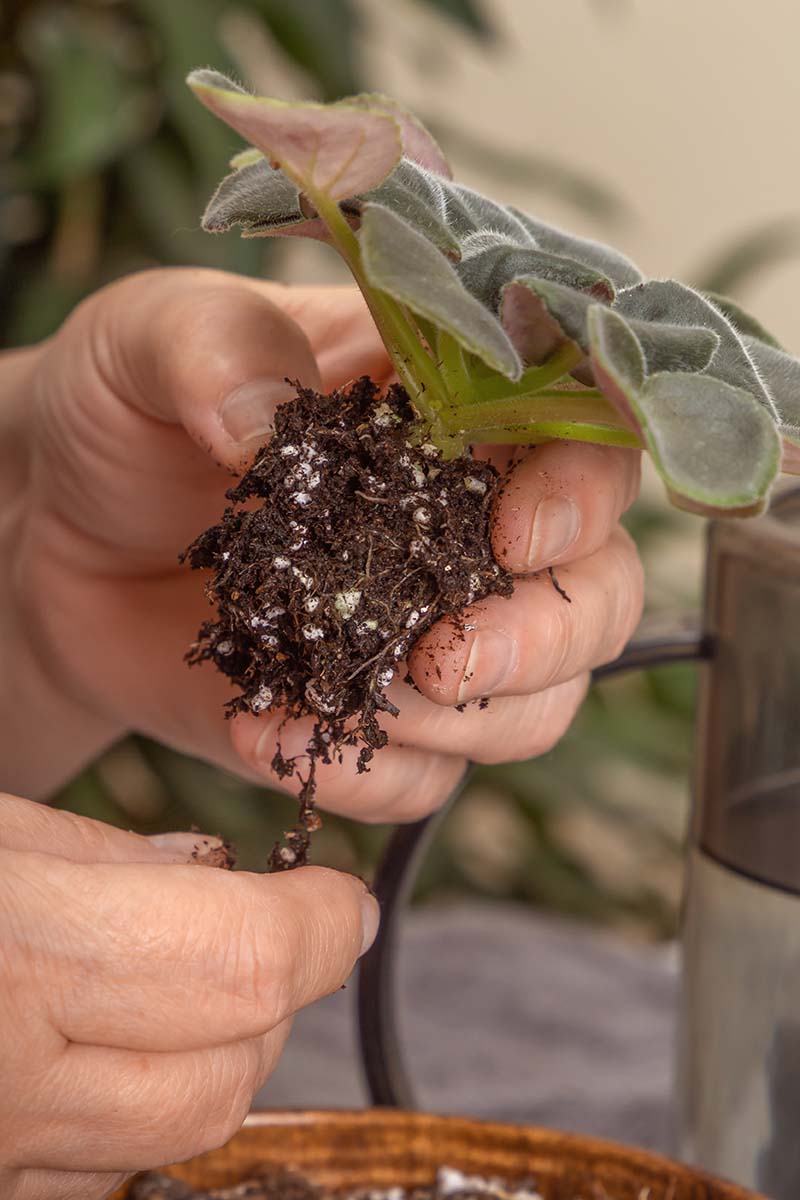
As an African violet matures, it produces one or more clones of itself called offsets or pups, which it feeds via the parent plant’s mature root system.
An offset is a baby plant. The point where the stems join the roots is called the crown. Once roots sprout from the crown, the pup is ready for division.
Dividing African violets serves several purposes:
- Keeping the parent plant healthy
- Propagation
- Reduction of size
- Restoration of visual appeal
Let’s consider each of these in more detail.
Keeping the Parent Plant Healthy
When a mature African violet produces a clone of itself, part of its nutrient intake is diverted to sustain the offset.
And when the new plant grows its own roots, the parent faces competition for food and water as they are growing in close proximity.
Separating a pup from a parent plant and potting it up separately enables the parent to obtain all available nutrients in the potting soil without competition.
Propagation
An African violet is unlikely to produce “true” if it’s grown from seed because these plants are generally hybrids.
The only ways to replicate a favorite African violet and ensure identical traits are by dividing or propagating leaf cuttings.
Removing and potting up pups is a budget-friendly way to start new plants that are clones of your favorite specimens.
Reduction of Size
An African violet with multiple offsets may become too large for its pot.
In addition to competing for nutrients and water, it may become rootbound and unable to absorb nutrition from the soil.
Separating and removing pups can restore a parent to a manageable size for optimal care and feeding.
Restoration of Visual Appeal
A single rosette-style specimen has one crown from which a whorl of leaves sprouts, the signature shape of the typical African violet.
When it puts out offsets, the result is a specimen with multiple crowns, the loss of the compact form, and a visually unappealing display.
The removal of offsets restores a single rosette focal point.
Cascading varieties have multiple crowns as part of their natural growth habit, but benefit from the division of older crowns to make way for new growth.
Now, let’s learn how to divide!
How to Separate Offsets
The best time to remove an offset is when it has its own roots. It’s ready when it is approximately three to four months old or when the leaves are at least dime- or nickel-sized.
If you have started a sprout from a leaf cutting, this age and leaf size are also appropriate benchmarks for separating it from the old parent leaf.

The best time to divide African violets is just after flowering so that the plant’s energy is directed towards root production.
To be sure that roots have developed, you’ll need to unpot the entire plant.
Prepare to unpot by watering the specimen a few days before so the soil is moist but not soggy.
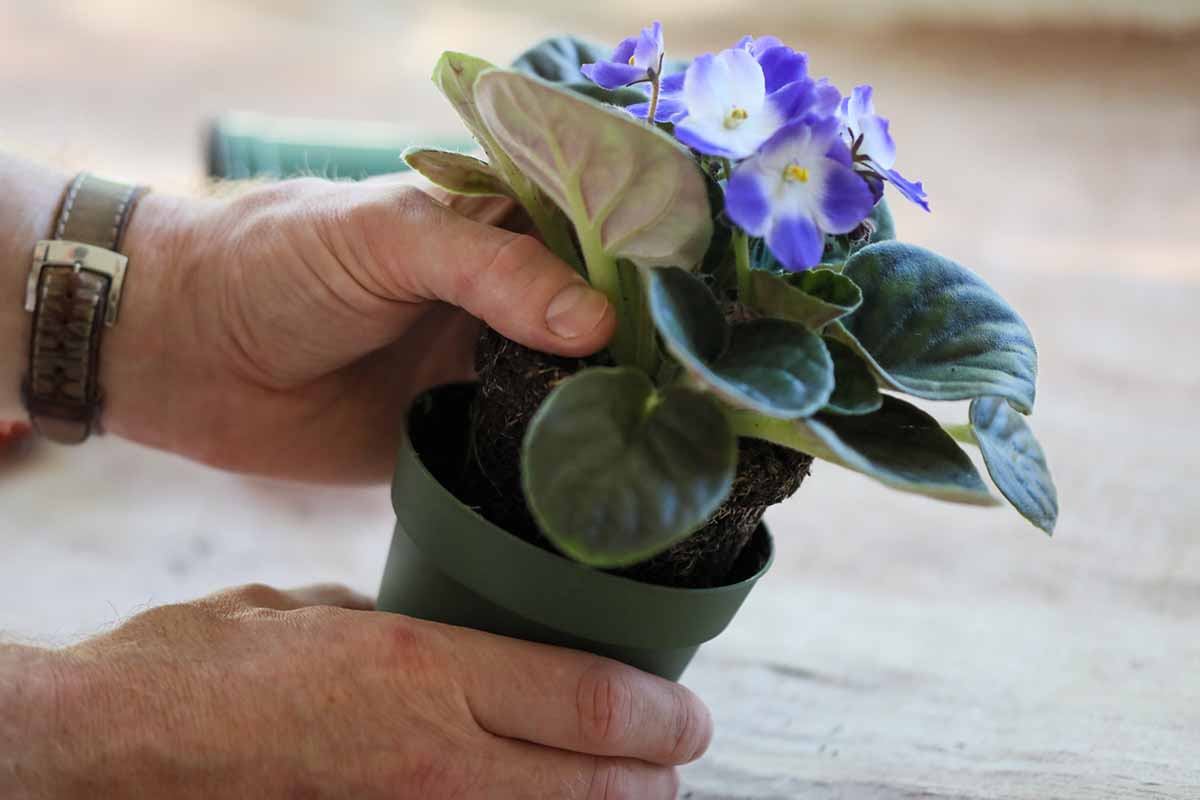
Slip a round-edged dinner knife between the soil and the edge of the pot to loosen the contents, and ease the plant out of the pot.
Examine the soil below the pups for evidence of roots. A division is most likely to thrive when it has roots attached to the green stems and foliage.
If you are unable to separate it with the roots attached, you can repot and wait a bit longer, or dip the rootless pup into rooting hormone before planting.
You may be able to gently tease an offset’s roots away from those of the parent. Otherwise, use sanitized scissors to sever the roots connecting the two.
Take care not to detach the tender young roots from the offset.
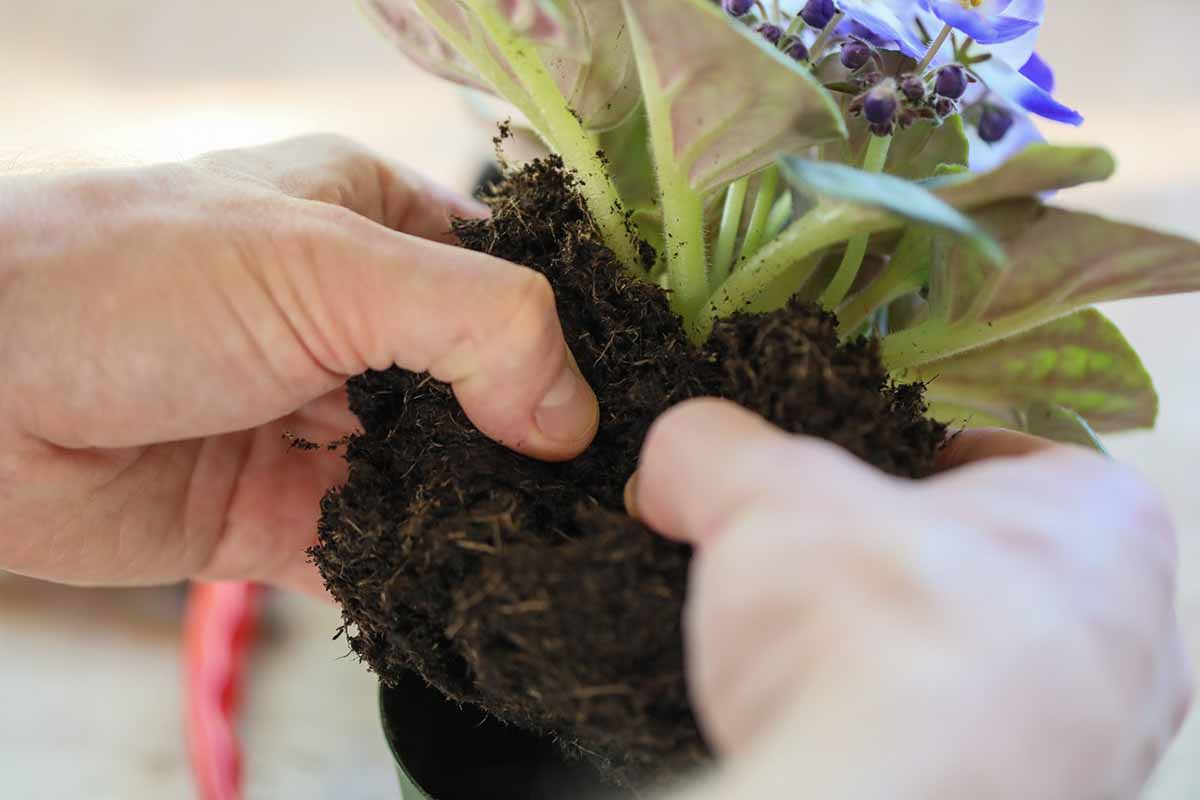
Lay the separated baby plant aside and return the parent to its original container. Backfill with additional African violet potting soil as needed.
Cascading types have multiple crowns and loose, airy growth.
To encourage offset formation, you can remove large, older crowns by dividing them as above, or pinch off individual large, old leaves.
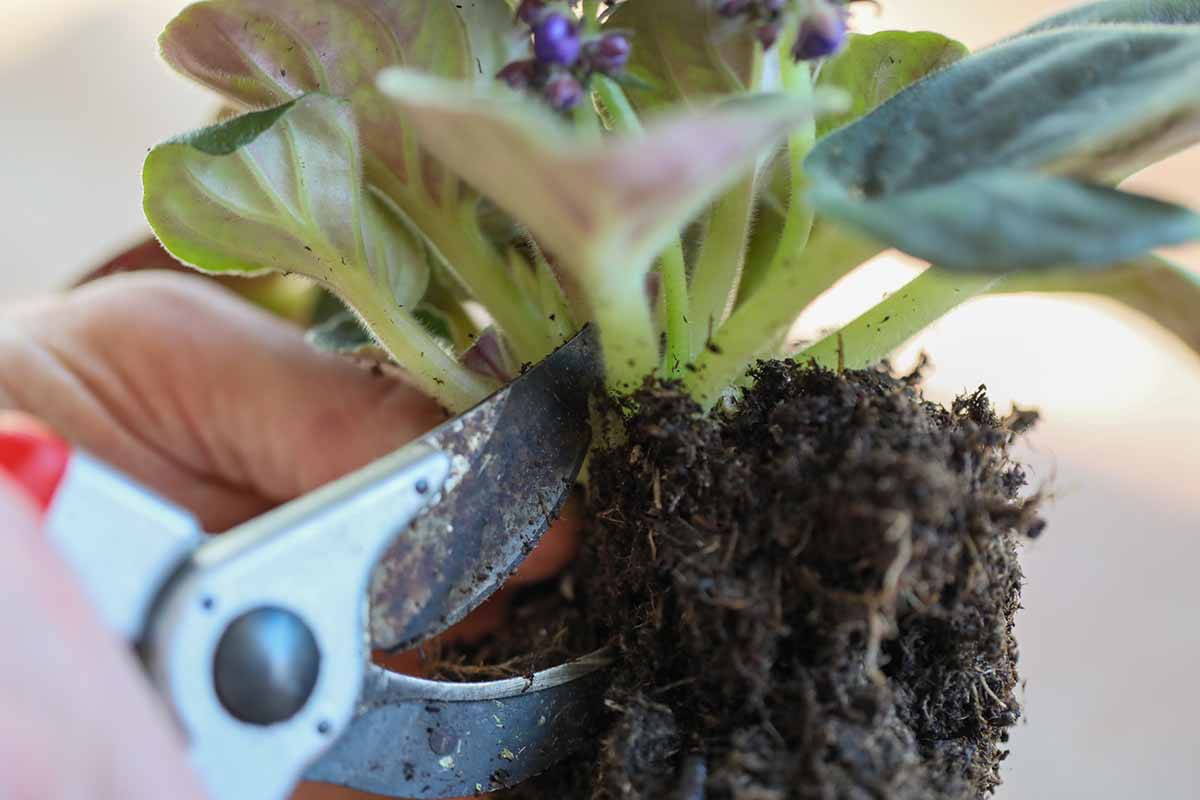
A quick way to remove a substantial pup from a cascading or rosette species is to skip the unpotting and simply slice through the crown at the base of the stem cluster and lift the pup out of the pot.
This is a useful technique if you are in an office setting where making a mess isn’t feasible, and you want to reduce a plant’s size and/or share pups with colleagues.
Because it’s likely that the pup won’t have intact roots, to propagate the offset, you’ll need to dip the bottom of the severed crown into rooting hormone powder before planting as above.
Potting Up
An African violet likes a fairly snug pot at all stages of its life. When transplanting an offset, a three-inch plastic or biodegradable seedling pot is a suitable size.

Fill the pot three quarters full of a light African violet potting soil. Do not tamp it down. Instead, keep it loose and airy.
Alternatively, you can use a mix of equal parts peat, perlite, and vermiculite.
Make a wide, shallow depression in the soil.
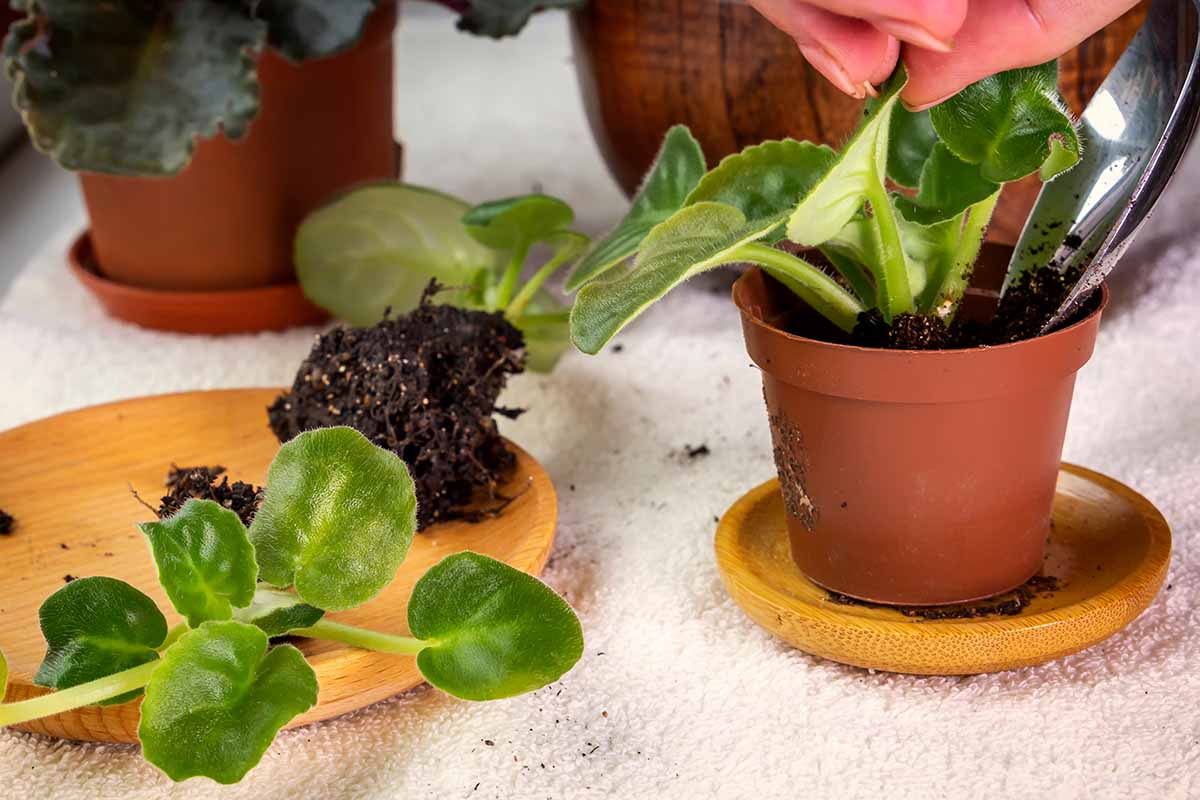
Place the rooted crown on top of the depression. Set it so that the undersides of the lowest leaves are just above the pot rim and the roots are splayed out sideways if possible. Make the hole deeper or shallower as needed.
Gently backfill with soil to hold it firmly in place at the appropriate depth.
Tamp lightly around the little plant to secure it in an upright position.
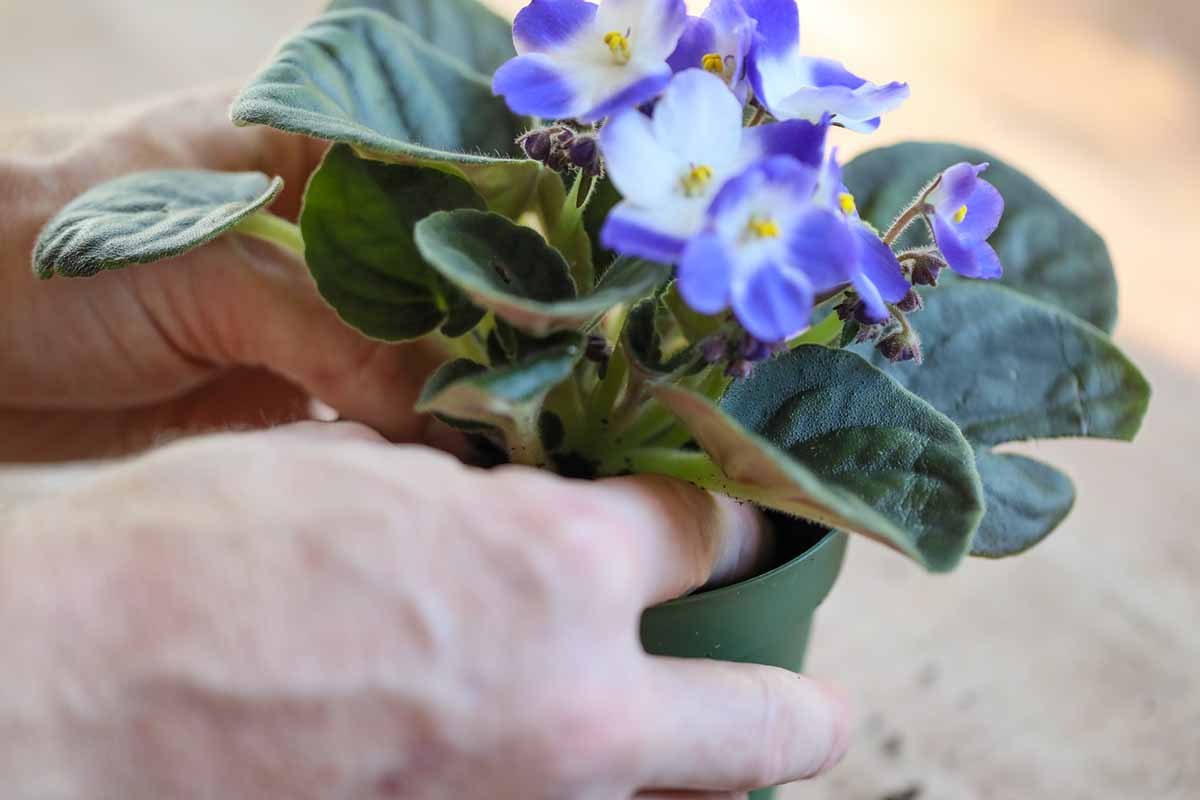
If you accidentally break off the roots, dip the rootless crown into rooting hormone powder and bury it about a quarter of an inch deep. It will likely grow new roots.
Moisten the potting soil but do not soak it, and be sure to avoid wetting the leaves.
Cover the pot with a cloche or plastic bag to increase the ambient humidity around the new plant.
Going Forward
Place the pot in bright, indirect sunlight near a south- or east-facing window. Avoid direct sunlight through window glass that may scorch the foliage and overheat the plant.
Take the cloche or bag off for a few hours daily to avoid oversaturation. Remove it when new foliage appears.
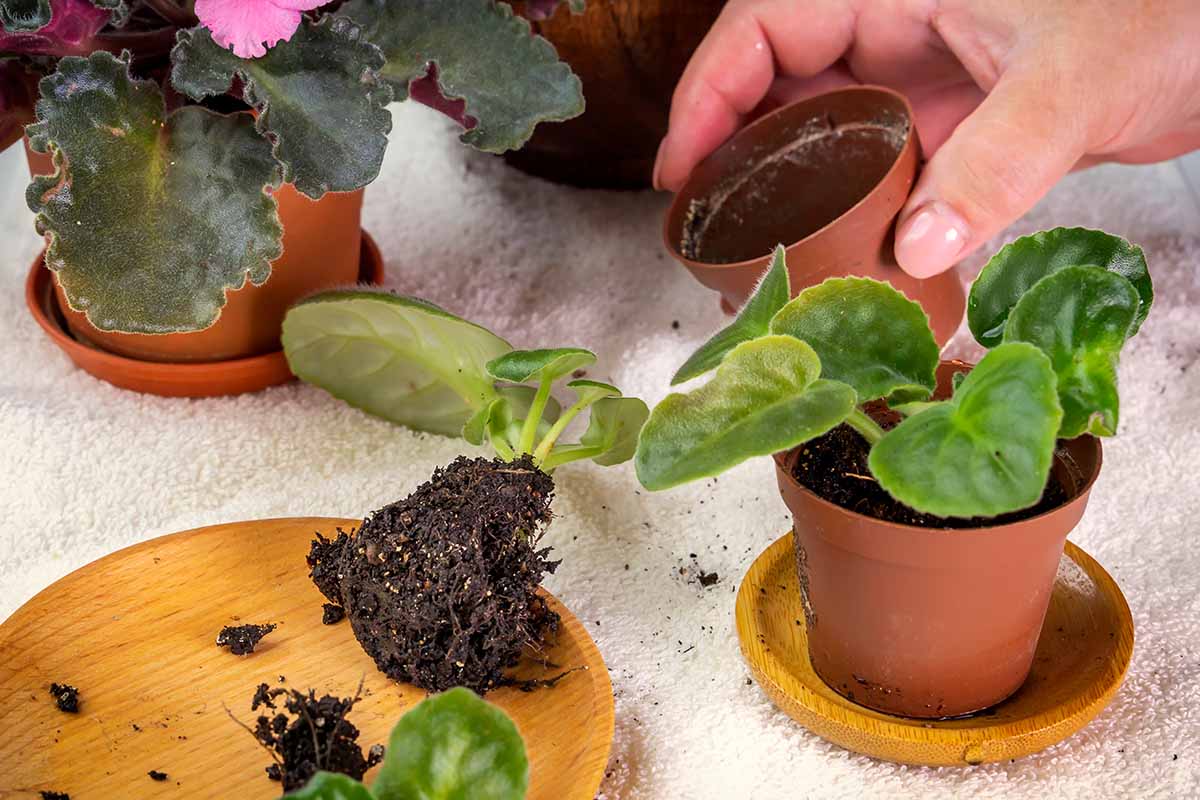
Provide a growing environment with a room temperature of 65 to 80°F with about 80 percent humidity if possible.
To increase the humidity, place pea gravel or small stones in a single layer on a tray and fill the tray with just enough water to cover them. Place the pot on top of the stones.
Water when the potting soil dries out completely. You can also use the bottom-watering method by setting the pot into a pan of water for about 20 minutes to ”drink” what it needs.
African violets are prone to rotting in oversaturated soil, so this technique is a worthwhile preventative measure.
Give your plant a month or more to become established before instituting a monthly regimen of fertilizing with a liquid plant food diluted to a quarter strength.
Monitor for common houseplant pests like mealybugs, aphids, and spider mites, and the fungal condition, powdery mildew.
Act swiftly to address infestation and infection with an insecticide and fungicide like organic neem oil. Please note neem oil has a strong, garlicky odor.
As the baby plant grows, it will eventually need a larger pot.
A good rule of thumb for container selection is to choose one that is one-third the size of the diameter or width of the leaf span. For example, if the leaf rosette measures nine inches across, a pot with a diameter of three inches is suitable.
And because African violets have shallow roots, it’s best to choose a shallow pot rather than a deep one because the soil in a deep container stays wet for too long and can promote rotting.
African violets do best when repotted annually in fresh soil to remove fertilizer salt buildup that inhibits water uptake. Unglazed ceramic and terra cotta pots are prone to salt buildup on the outside, so consider glazed or plastic containers when you need to go up in pot size.
If repotting litters the foliage with soil, don’t wash it off, as the leaves are very prone to fungal disease that proliferates in moist conditions. Instead, use an artist’s paintbrush or microfiber duster to sweep the debris away gently.
Showing to Best Advantage
To recap, we divide to support the parent plant’s health, propagate pups, reduce overcrowding, and restore visual appeal.
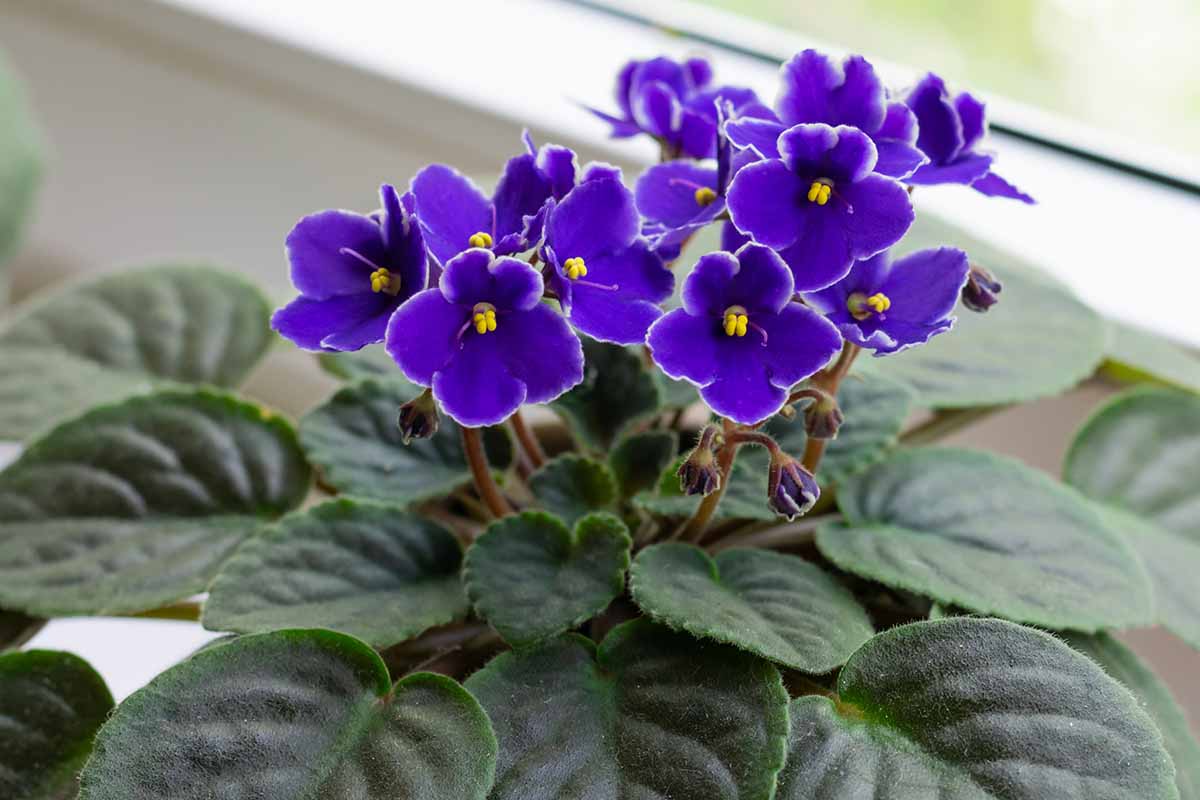
Dividing allows us to display our plants to the best advantage, a requirement for gardeners who show at garden society events that require a single rosette variety to have only one crown and a trailing type, at least three.
Add dividing to your African violet care regimen today and keep yours looking and feeling their best.
Do you grow African violets? Do you divide them regularly? Please tell us in the comments section below.
If you found this article helpful and want to learn more about houseplants in general and specifically African violets, we recommend the following:
